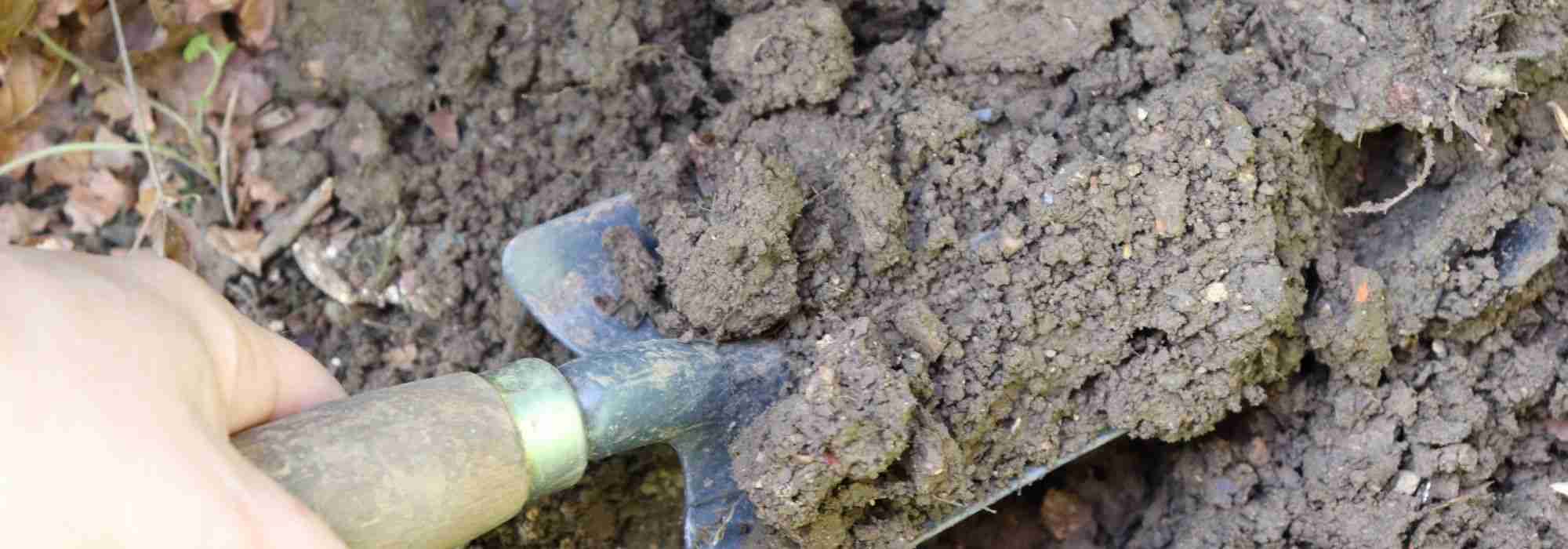
Soil fertility: rich or poor, how to tell?
Single tests and observations, solutions
Contents
Soil fertility is not limited, as is often said, to its nitrogen content. This concept is much more complex and, in reality, it is difficult to give a precise definition.
Nevertheless, it can be stated that a fertile soil is a living soil that does not deteriorate too quickly and can sustain a wide range of plants without nutrient deficiencies or disease.
→ Is your soil sufficiently fertile? Is it really wise to resort to heavy use of fertiliser? Find out everything in this factsheet!
La fertilité d’un sol est sa capacité à fournir aux plantes l’eau et les éléments nutritifs nécessaires à leur croissance, à leur floraison et à leur reproduction, tout en permettant le développement d’une vie microbienne et faunique favorable aux cycles biologiques. Principales dimensions de la fertilité - Fertilité chimique : disponibilité des éléments nutritifs (azote, phosphore, potassium et oligo‑éléments), capacité d’échange cationique (CEC), teneur en calcaire et pH (qui influencent la disponibilité des éléments). - Fertilité physique : structure du sol, granulométrie (argile, limon, sable), porosité, capacité de rétention d’eau et drainage, absence de tassement. - Fertilité biologique : activité des micro‑organismes (bactéries, champignons), présence de vers de terre et accumulation d’humus, qui créent un milieu vivant et fertile. Signes et indicateurs - Végétation vigoureuse et régulière, bonne production. - Présence de vers de terre et odeur de terre fraîche. - Teneur en matière organique (privileger 3–6 % pour potager), pH adapté aux cultures. - Résultats d’analyses de sol montrant des niveaux équilibrés en N, P, K et oligo‑éléments. Facteurs qui influencent la fertilité - Nature du matériau parent et texture du sol. - Climat et précipitations. - Pratiques culturales : apports d’amendements, rotations, travail du sol, irrigation, utilisation de pesticides. Comment améliorer la fertilité - Apporter régulièrement de la matière organique (compost, fumier bien décomposé, paillis) pour enrichir l’humus et nourrir la vie du sol. - Corriger le pH si nécessaire (chaulage pour sols acides, amendements acides pour sols très calcaire selon cas). - Adapter les apports nutritifs : engrais organiques ou minéraux selon les résultats d’analyse. - Mettre en place rotations et cultures de couverture / engrais verts pour restructurer le sol et éviter l’appauvrissement. - Éviter le compactage (limiter le trafic et le travail profond du sol), favoriser la porosité. - Encourager la biodiversité (mycorhizes, microfaune) et limiter les intrants chimiques agressifs. Conseils pratiques pour le jardinier - Faire analyser le sol (pH et analyses complètes) avant d’apporter des amendements importants. - Travailler à augmenter progressivement la matière organique plutôt que d’appliquer des doses excessives d’engrais. - Adapter les apports aux besoins des cultures (ex. plus d’azote pour les légumes feuilles, plus de phosphore pour floraison/fructification). - Surveiller l’humidité et le drainage : un sol trop humide ou trop sec réduit la disponibilité des nutriments. En résumé, la fertilité est un équilibre entre propriétés chimiques, physiques et biologiques du sol. Entretenir et améliorer la fertilité passe par des pratiques qui restaurent la matière organique, protègent la vie du sol et ajustent les éléments nutritifs selon les besoins des plantes.
Soil functioning is complex and a less vague definition of soil fertility could be:
“The capacity of soil to meet the physical, chemical and biological needs necessary for plant growth, for their productivity, reproduction and quality in a way adapted to plant type, soil type, land use and climate conditions.” (Abbot & Murphy: Soil biological fertility – 2003)
In short, soil fertility can be defined by the following factors:
- its humus content: humus, the upper layer of soil created by decomposition of organic matter, provides structure to soil and retains water;
- soil depth: or more precisely the subsoil, the layer beneath topsoil. It must be sufficient for root development of plants;
- soil drainage: compact, oxygen-starved soil does not allow good movement of gases, water or nutrients;
- level of available nutrients: plants need nitrogen, carbon and trace elements to grow and remain healthy. If soil is deficient or elements are not available because of compaction or excessive acidity for example, plants will not grow normally;
- its acidity level: most plants grow very well at a pH between 5.5 and 8;
- soil life: insects, earthworms, micro-organisms, mycorrhizae… all help create fertile soil. Dead soil where inhabitants are only a distant memory will not be fertile. Unless turned into a chemical factory with industrial fertilisers…
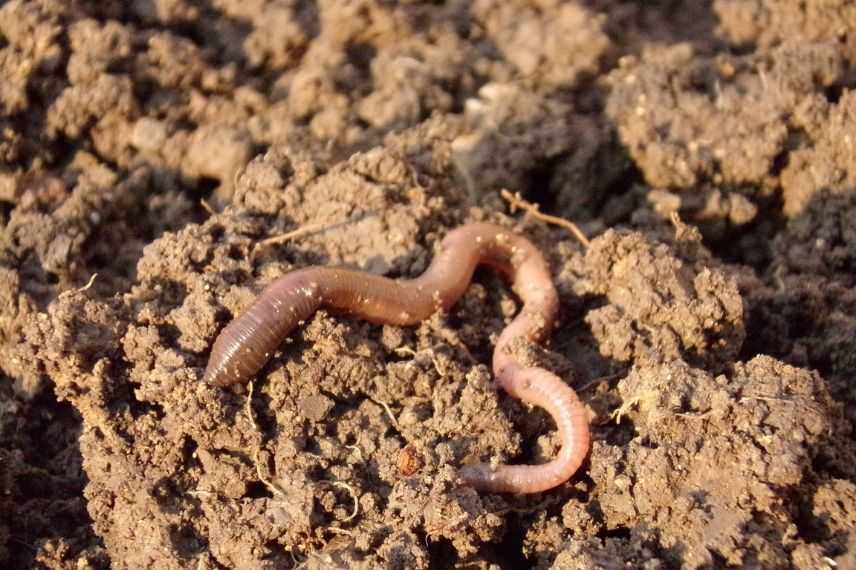
How can you tell whether your soil is rich or poor?
Observing your plants
To judge whether soil is fertile, no need to embark on costly analyses. Initially, simply observe what grows in your garden and how those plants grow. Observing plants gives valuable clues about soil fertility. If soil is rich in humus, plants will grow quickly, with attractive foliage, and without excessive disease or pest pressure.
Observing adventive and native plants
Plants do not grow in a given place by chance. Native plants known as nitrophilous will grow on nitrogen-rich ground: nettles, fat-hen, couch grass, deadnettles, annual mercury, hogweed, chickweed… If you see these plants in large numbers in your garden, you can be confident that soil is rich enough to grow any plant.

Some adventive plants: nettle, chickweed and red deadnettle
Perform the hydrogen peroxide test
A good way to assess level of organic matter in soil is to carry out a simple hydrogen peroxide test using hydrogen peroxide (H2O2) available from pharmacies.
There are two types of organic matter: stable humus that breaks down slowly and fugitive organic matter that decomposes quickly, thus providing minerals rapidly to plants. Each soil contains these two types of organic matter in varying proportions.
Pour faire le test :
Place some soil on a plate. Put a few drops of hydrogen peroxide onto the soil. Three reactions are possible :
- Soil does not foam : presence of large amount of stable humus but very little fugitive organic matter. It will be necessary to restart mineralisation, that is decomposition of organic matter into minerals, by supplying oxygen to pedofauna in particular: for example by lightly raking soil.
- Soil foams a lot : organic matter is mainly in fugitive form. It decomposes very quickly and C/N ratio (Carbon / Nitrogen) is unbalanced. Carbon needs to be added: twigs, straw, wood, BRF, untreated cardboard…
- Soil foams a little : organic matter is more stable and therefore holds more water. This is best-case scenario. C/N ratio (Carbon / Nitrogen) is in perfect balance. Soil has good fertility and is quite stable.
Please note : C/N ratio is an important concept to consider when discussing soil fertility. It indicates speed of decomposition of organic matter. The higher the C/N ratio, the more slowly organic matter decomposes, but resulting humus or compost is then very stable. That is why, for example, green waste layers (Nitrogen) are alternated with brown waste layers (Carbon) in a compost heap.
How to make soil fertile?
Understand your soil and act accordingly
No need to fertilise soil that is already fertile but whose structure prevents nutrients reaching plants’ roots. First address structural problems — for example, lighten compacted soil — before applying any hypothetical fertiliser.
→ Quelques pistes vous sont fournies dans notre fiche conseil “Gardening in heavy, wet soil“.
Moreover, soil that is too acidic does not allow good transport of nutrients to plants’ roots: correction with a liming amendment can remedy this. Conversely, soil that is too calcareous needs to regain a good humus-bearing layer to become fertile again.
→ Lisez à ce sujet ces deux articles “Gardening in acidic soil” and “Gardening in calcareous soil“.
Add organic matter
Everyone hopes for humus-bearing soil like in a forest. To create soil rich in humus — and therefore rich in nutrients with a structure that retains water without excess — you must “imitate” what happens in nature. This is what agroforestry enthusiasts do by combining tree cultivation with more conventional agriculture, thus protecting soil from degradation. The solution is to add organic matter to soil: fallen leaves, green waste… and well-matured compost, even well-rotted manure.
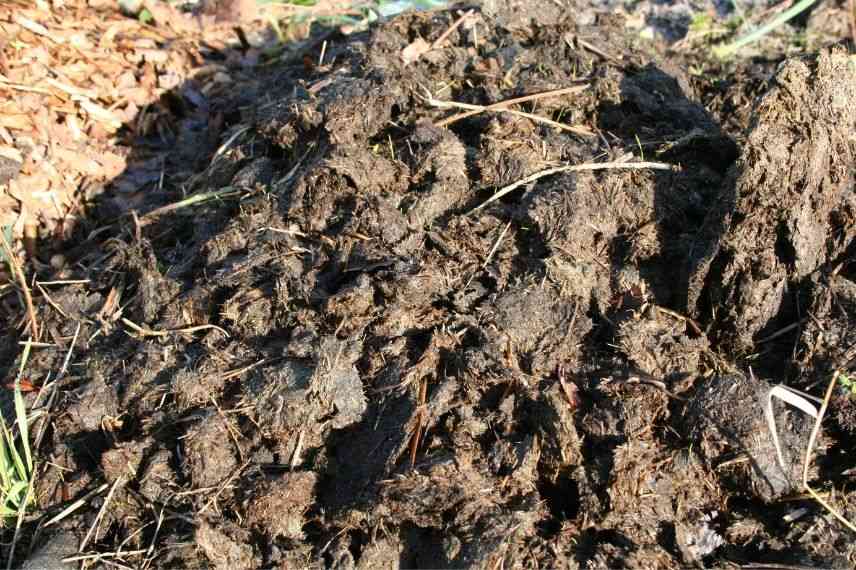
Well-rotted manure
Green manures and other soil coverings
Green manures live up to their name. They are plants sown to prevent soil from remaining bare for too long: phacelia, rye, mustard, crimson clover… When the area is needed for crops, simply cut the green manure and incorporate it into soil.
Other soil coverings — grass mulches, BRF, straw, fallen leaves… besides protecting soil, these also will be incorporated into soil gradually by detritivores (earthworms, insects, fungi… feeding on organic matter).
You can also leave an impoverished part of soil fallow. Plants will soon colonise the surface and over time help make that area fertile.
Crop rotation
In a vegetable plot, crop rotation is an indispensable technique for maintaining soil fertility (among other benefits!). Legumes (family Fabaceae) such as peas, broad beans or beans are plants capable of fixing atmospheric nitrogen. They are therefore perfect to grow immediately after nitrogen-hungry vegetables such as courgettes or other cucurbits.
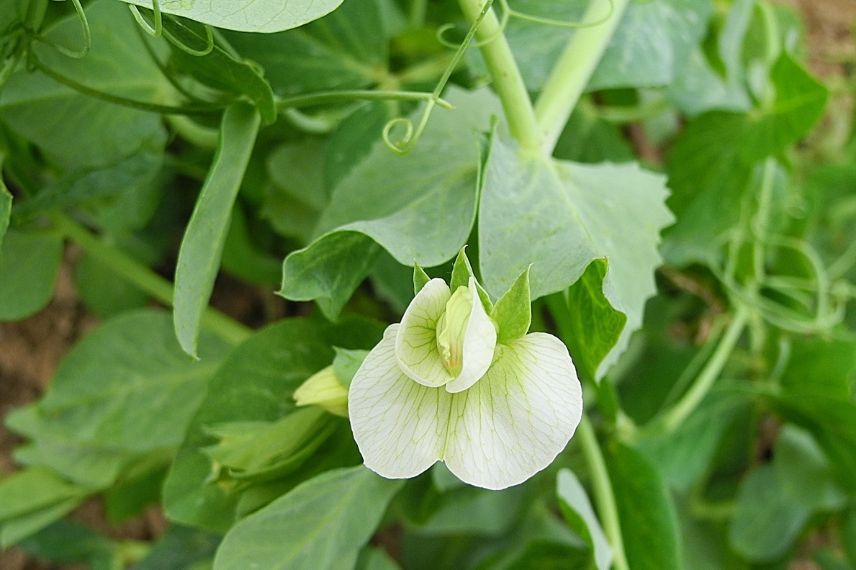
Legumes make excellent green fertilisers!
Please note : Chemical inputs or amendments are not a good solution for solving soil fertility problems in the medium and long term. Best is always to create natural soil with natural elements: wood, BRF, fallen leaves, organic waste…
Read also
What is soil pH?Does a garden necessarily need to be cultivated on rich soil?
Poor soil is sometimes a blessing
Paradoxically, biodiversity in botany, and therefore the resulting faunal biodiversity, is greatly reduced on rich soil. In fact, on heavily amended or naturally rich soil, a short succession of so‑called nitrophilous plants (hogweeds, nettles…) will take over other species, reducing botanical diversity.
Some nature lovers work themselves to exhaustion or spend fortunes trying to impoverish part of their garden to create an area of high biodiversity value: this is called a biodiversity “hotspot”. So if you love nature and have poor soil, pop the champagne! It will be an opportunity to establish a low‑fertility meadow or simply let nature take its course and wait for native flowers to arrive naturally in your garden.
Vegetable garden on poor soil?
Growing vegetables requires a lot of nutrients to provide high‑quality produce. Imagine what a courgette plant must “eat” to give you a vegetable as long as your arm in just a few days! The quickest solution if you have poor soil is… not to grow on it. Instead favour alternative growing techniques: on mounds, in lasagne beds or in a raised bed filled with potting compost. There are plenty of solutions…
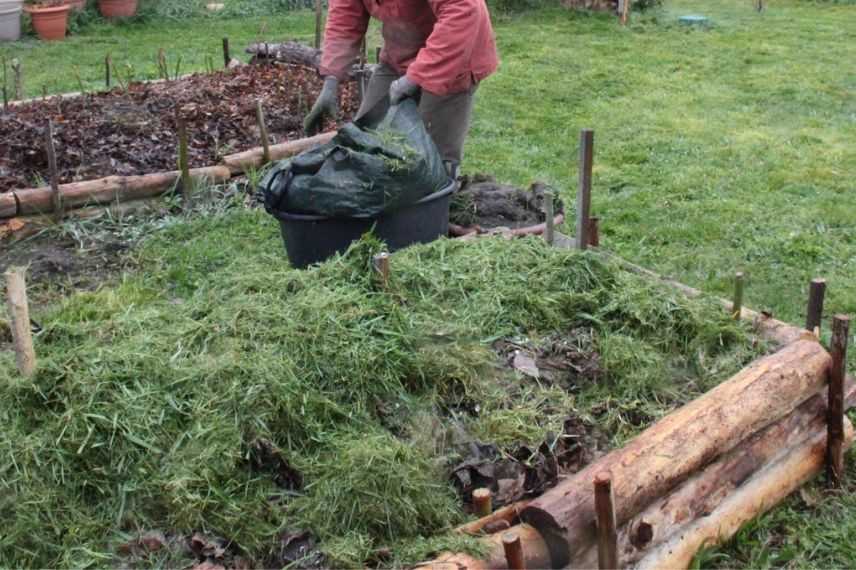
Creating a lasagne mound for vegetable growing
Plants adapted to poor soils
Trees and bushes
Some trees or bushes like to grow on poor soils: Scots pine, oak, juniper, broom, amelanchier, wayfaring tree, sea buckthorn, lavender…

Some trees and bushes suited to poor soils: Broom, Sea buckthorn and Oak
Not to forget Mediterranean aromatics: thyme, savoury, rosemary…
Perennials and annuals
Many flowers cope well with poor ground: rose campion, wallflower, dusty miller, euphorbia, honeysuckle, mullein, Argentinian verbena, garden verbena, oregano… And even grasses: stipa, fescue…

Some perennials and annuals suited to poor soils: Rose campion, Mullein and Argentinian verbena
Vegetable patch and orchard
Some vegetables can nevertheless be attempted successfully: garlic, onion, shallot, lettuce, asparagus, orache and fat-hen. For fruits, try strawberries, grapevine of course and perhaps a somewhat forgotten orchard tree, Cornelian cherry.

Some vegetables and fruits suited to poor soils: Onions, Grapevine and Cornelian cherry
- Subscribe!
- Contents
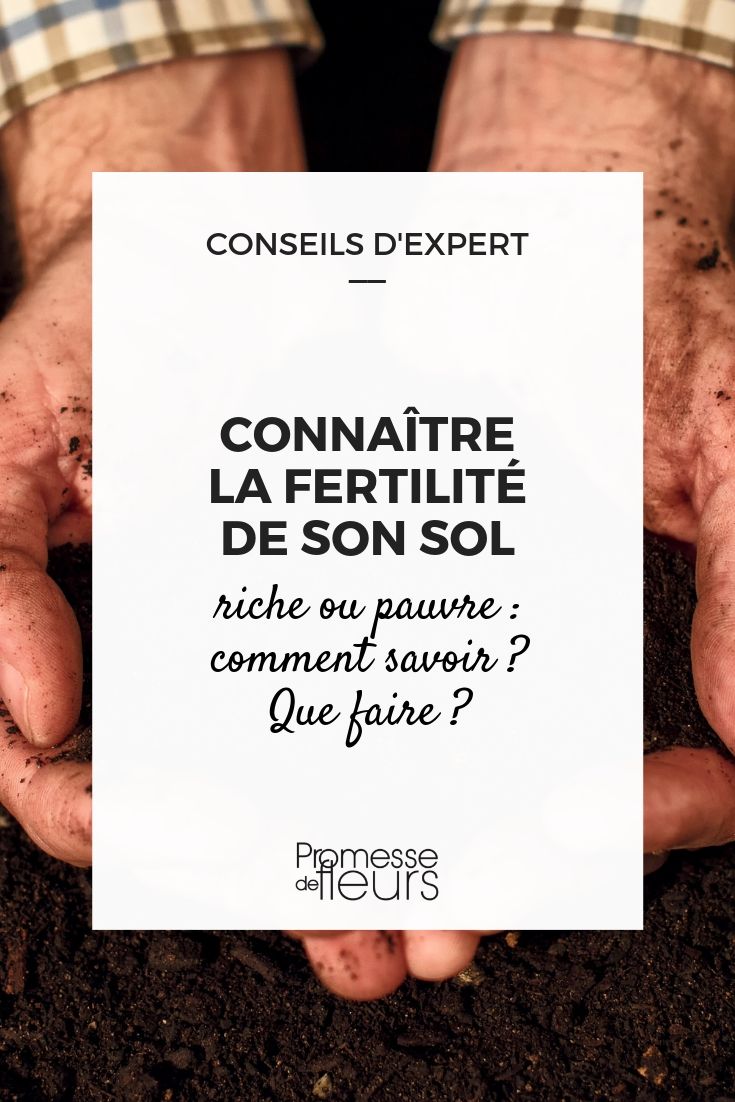































Comments